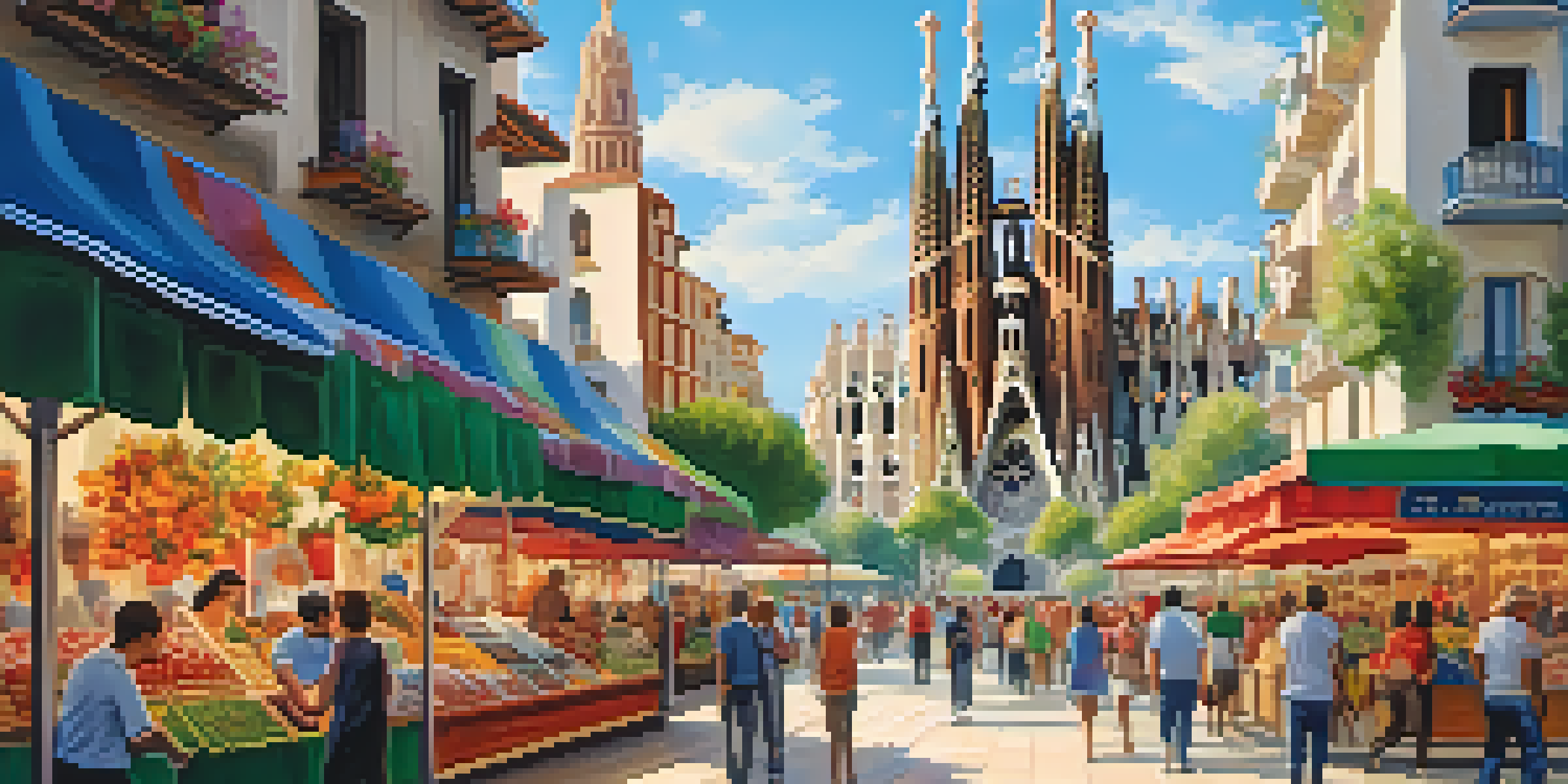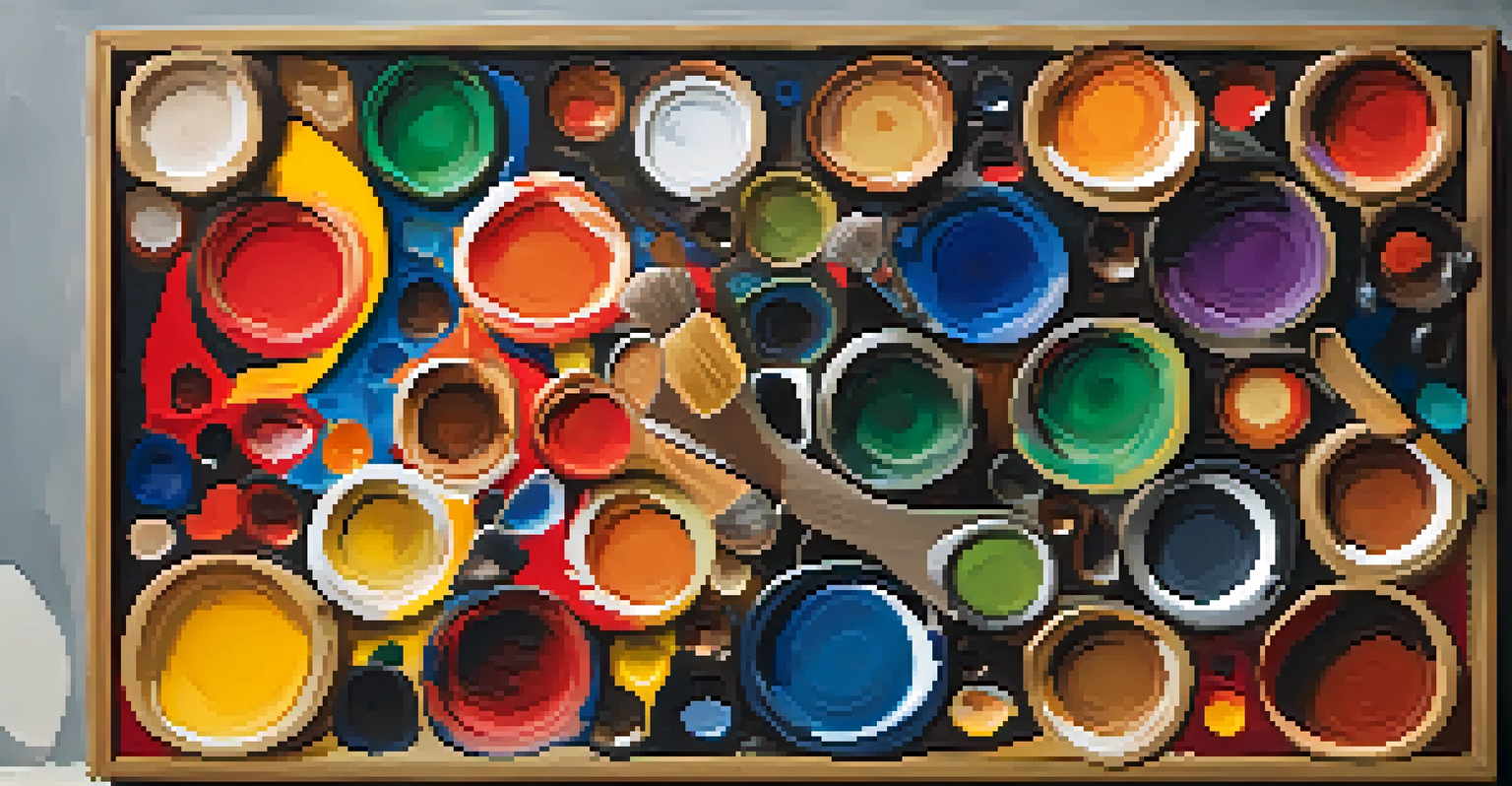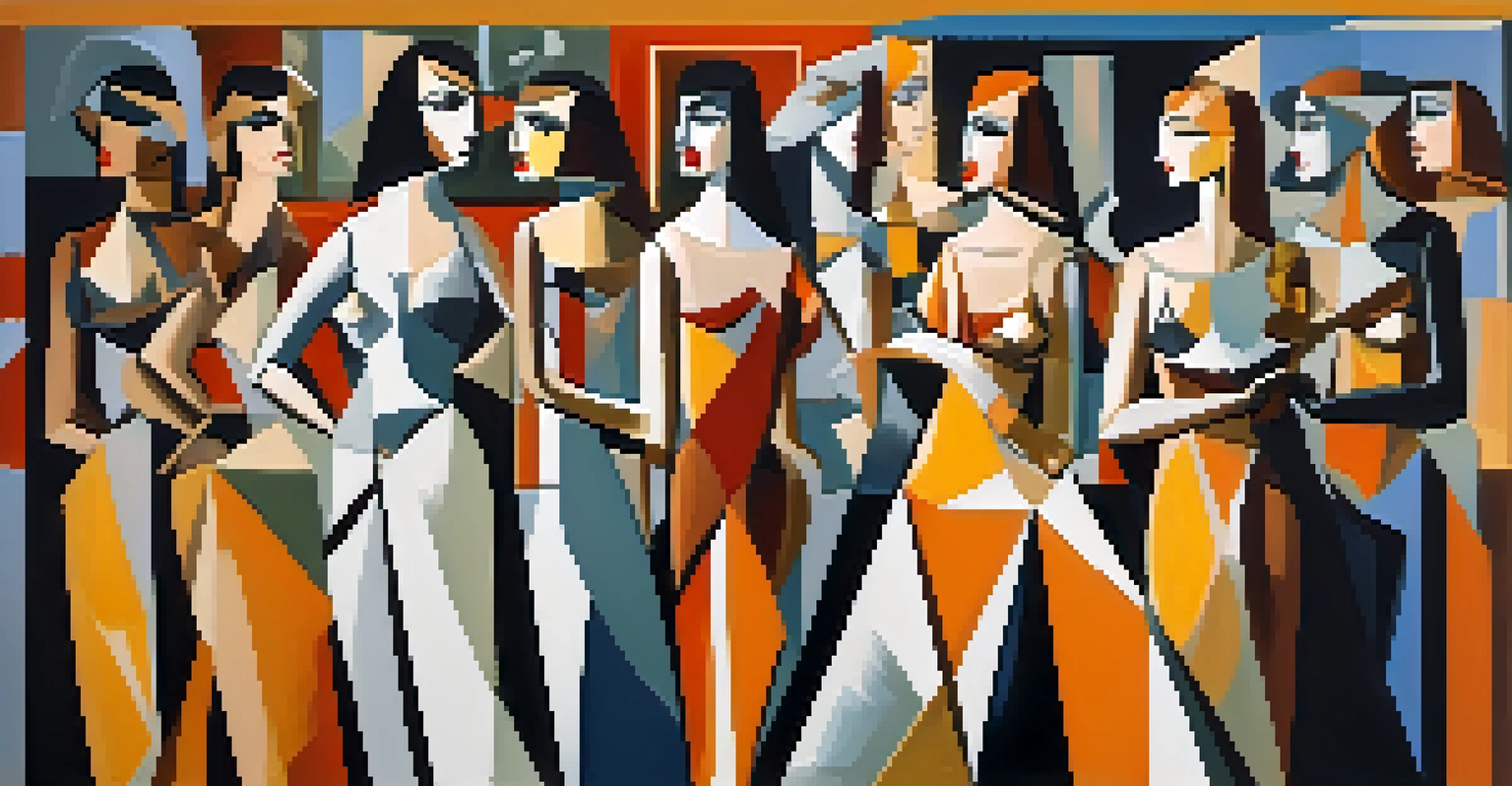The Roots of Modernism in Spain: Influential Artists Explored

Understanding Modernism: A Brief Overview
Modernism emerged as a radical departure from traditional artistic norms, embracing innovation and experimentation. It sought to capture the essence of contemporary life, reflecting the rapid changes in society, technology, and culture. In Spain, this movement was particularly vibrant, as artists began to challenge established conventions and explore new forms of expression.
Every act of creation is first an act of destruction.
This artistic revolution was not just about style; it was also about ideology. Artists aimed to break free from historical constraints, seeking authenticity and individual expression. The influence of European avant-garde movements, such as Impressionism and Cubism, played a significant role in shaping Spain's modernist landscape.
Through this period, Spanish artists began to articulate a unique voice, merging their cultural heritage with modernist ideals. The interplay between tradition and innovation would become a hallmark of Spanish modernism, setting the stage for the influential artists who followed.
Pablo Picasso: The Pioneer of Modernism
Pablo Picasso is perhaps the most recognized name in modern art, and for good reason. Born in Málaga, Spain, his work spanned various styles and movements, fundamentally altering the course of art history. His creation of Cubism, characterized by fragmented forms and multiple perspectives, challenged viewers to see subjects in new ways.

Picasso's ability to blend influences from his Spanish roots with modernist techniques made him a pivotal figure. His piece, 'Les Demoiselles d'Avignon,' is a perfect example of how he pushed boundaries, combining elements of African art and traditional Western painting. This bold approach not only redefined beauty but also prompted deeper conversations about identity and representation.
Modernism Shaped Spanish Art
The modernist movement in Spain revolutionized artistic expression, merging traditional heritage with innovative ideas.
Throughout his career, Picasso continued to evolve, experimenting with color, form, and subject matter. His relentless pursuit of innovation not only solidified his status as a master but also inspired countless artists to explore their own creative boundaries.
Salvador Dalí: The Surrealist Visionary
While Picasso laid the groundwork for modernism, Salvador Dalí took it in a different direction with his surrealist explorations. Born in Catalonia, Dalí's work was marked by dreamlike imagery and bizarre juxtapositions, inviting viewers into his eccentric mind. His famous painting, 'The Persistence of Memory,' with its melting clocks, vividly illustrates the fluidity of time and perception.
The only difference between a madman and me is that I am not mad.
Dalí's unique approach was deeply influenced by his fascination with psychology and the subconscious, often drawing inspiration from Sigmund Freud's theories. He believed that art could unlock hidden desires and fears, leading to a deeper understanding of the human experience. This focus on the psychological aspects of art distinguished him from his contemporaries.
Moreover, Dalí's flamboyant personality and public persona played a crucial role in popularizing surrealism. His extravagant mustache and theatrical antics captivated audiences, making him as famous for his lifestyle as for his art. This combination of creativity and charisma cemented his legacy as one of modernism's most intriguing figures.
Joan Miró: The Poet of Color and Form
Joan Miró stands out as a key figure in modernism, celebrated for his vibrant colors and whimsical forms. His work reflects a deep connection to his Catalan roots, yet it also breaks free from traditional representation. Miró's playful use of abstract shapes and symbols invites viewers into a world of imagination and spontaneity.
Unlike many of his contemporaries, Miró sought to express emotion rather than adhere to strict forms or structures. His paintings often evoke a sense of childlike wonder, encouraging viewers to reconnect with their own creativity. This approach aligns with the modernist ethos of prioritizing personal expression over established norms.
Key Figures: Picasso and Dalí
Artists like Picasso and Dalí pushed boundaries in modern art, each contributing unique styles that reflected deeper societal themes.
Miró's influence extends beyond painting; he ventured into sculpture, ceramics, and tapestry, showcasing his versatility as an artist. His work continues to inspire new generations, reminding us of the power of imagination and the importance of seeing the world through a different lens.
Ramon Casas: The Modernist Portraitist
Ramon Casas was instrumental in introducing modernist principles to portrait painting in Spain. His ability to capture the essence of his subjects with a fresh perspective marked a significant shift in the portrayal of identity. Casas often infused his portraits with a sense of intimacy, allowing viewers to connect with the individuals depicted.
Working primarily in the late 19th and early 20th centuries, Casas blended influences from Impressionism and Post-Impressionism, creating a unique style. His loose brushwork and emphasis on light and color brought a new vibrancy to traditional portraiture. He often painted notable figures from Barcelona's artistic circles, reflecting the cultural richness of the time.
Casas' contributions extended beyond his canvases; he was also involved in the modernist movement through his role as a promoter and advocate. By fostering a community of artists and embracing new ideas, he helped shape the modernist landscape in Spain, leaving a lasting impact on the country's artistic evolution.
The Influence of Spanish Architecture on Modernism
Spanish architecture played a crucial role in the development of modernism, providing a rich backdrop for artistic expression. The intricate designs of Antoni Gaudí, for example, merged natural forms with innovative techniques, challenging traditional architectural norms. His work, particularly the Sagrada Familia, exemplifies a seamless blend of functionality and artistry.
The influence of modernist architecture can also be seen in the works of other Spanish architects, such as Ricardo Bofill and Rafael Moneo. They embraced modernist principles while incorporating elements from Spain's diverse architectural heritage, creating structures that resonate with both history and contemporary life. This dialogue between past and present has become a hallmark of modern Spanish architecture.
Legacy Influences Contemporary Art
The roots of modernism continue to inspire contemporary Spanish artists, fostering a rich dialogue between past and present artistic practices.
Moreover, the interplay between architecture and the visual arts has enriched the modernist movement in Spain. Artists often drew inspiration from architectural forms, and vice versa, creating a dynamic relationship that continues to influence contemporary artistic practices today.
Legacy of Modernism in Contemporary Spanish Art
The roots of modernism in Spain have left an indelible mark on contemporary art, shaping the voices of today's artists. Many modern Spanish artists draw inspiration from the pioneering figures of the past, blending traditional techniques with modern themes. This fusion allows them to explore new narratives while honoring their cultural heritage.
Contemporary art fairs and exhibitions, such as ARCO Madrid, highlight the ongoing relevance of modernism in Spain. They showcase a diverse range of works that reflect both global influences and local traditions. This vibrant art scene continues to thrive, as artists push boundaries and engage with pressing social issues.

Furthermore, the legacy of modernism extends beyond the canvas; it informs various art forms, including literature, music, and performance. This interdisciplinary approach fosters a rich cultural dialogue, ensuring that the spirit of modernism remains alive and relevant in Spain's artistic landscape.
Conclusion: The Enduring Impact of Modernism in Spain
In conclusion, the roots of modernism in Spain are deeply intertwined with the country's rich cultural heritage. Influential artists like Picasso, Dalí, Miró, and Casas paved the way for a new era of expression, challenging conventions and redefining what art could be. Their legacies continue to resonate, inspiring future generations to explore and innovate.
Moreover, modernism's impact extends far beyond the realm of visual arts; it has shaped a broader cultural narrative that encompasses architecture, literature, and more. This interconnectedness enhances our understanding of modernism as a vital force in Spanish culture, reflecting a dynamic interplay of ideas and creativity.
As we look to the future, it is clear that the spirit of modernism will continue to influence Spanish artists. By embracing their heritage while exploring new frontiers, they will ensure that the roots of modernism remain a vibrant part of Spain's artistic identity.